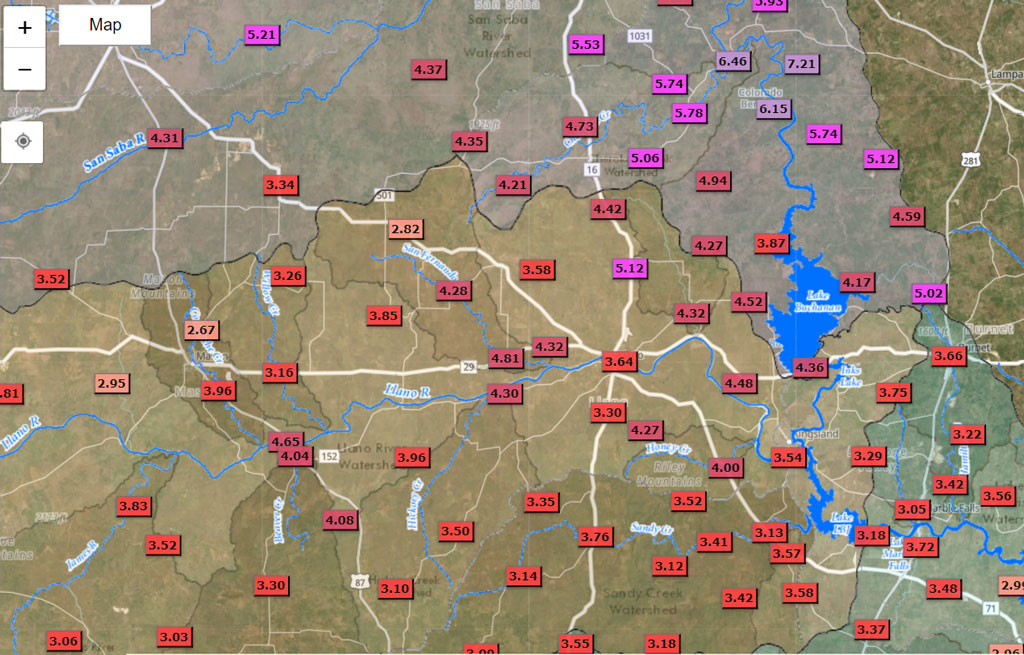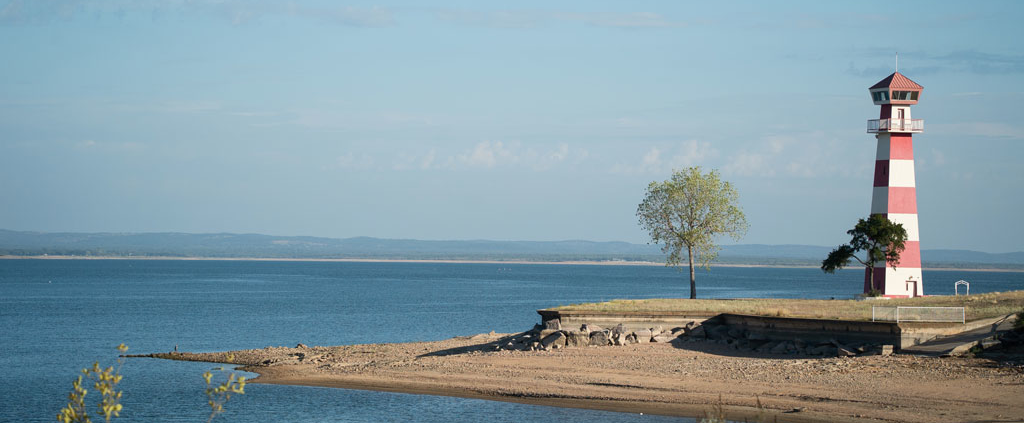Much more rain needed to bring Lake Buchanan to healthy level

Low levels on Lake Buchanan are made obvious by receded waters that left a lighthouse far from the new shoreline. Staff photo by Dakota Morrissiey
Lake Buchanan rose one foot after recent heavy rains, but long-term, consistent rainfall is needed to restore it to a healthy level, according to Lower Colorado River Authority officials. The massive reservoir, which feeds the chain of Highland Lakes, is currently 17 feet below its maximum of 1,020 feet.
Data from the LCRA Hydromet, a system of more than 275 automated river and weather gauges in the lower Colorado River basin, paints a bleak picture of Buchanan’s recovery status. Two to 7 inches of rain have fallen across the regional drainage basin since Nov. 8, resulting in a river flow of nearly 2,000 cubic-feet per second, almost 20 times its current level, in late November. During this time, Lake Buchanan rose to 1,003 feet from 1,002 feet elevation.
“Before the recent rains, the area of the river above Lake Buchanan, including the river’s tributaries, was pretty dry because of the ongoing drought,” LCRA Meteorologist Bob Rose told DailyTrib.com in an email interview. “The rains had to travel down a long stretch … from Winchell through San Saba to get to the river. As the riverbed was basically empty, that part of the river had to fill up before the river started flowing again.”
Burnet County has experienced severe drought conditions over the past year. According to the U.S. Drought Monitor, 100 percent of the county is currently in a moderate drought. No drought conditions were registered this time last year.

On Dec. 8, 2021, Lake Buchanan was at 1,015 feet elevation and holding 43.5 percent more water than it was on Dec. 8 of this year.
“I can’t give you a specific amount as to how much rain it would take to make an additional impact on the lake level, because that depends on how it rains and when it rains,” Rose said. “If we get a good four- to five-inch-rain now, when the soil is still wet, we would likely see significantly more runoff than we saw from the prior rain event. If we get four to five inches of rain spread out over the next few weeks, the impact would be less because the soil would dry out between the rain events.”
Further data from the LCRA Hydromet show soil across the Highland Lakes accumulating more moisture, reaching over 50 percent saturation in some areas, but, as Rose said, more rain will be needed to keep the land hydrated.
“The recent rains were welcome and were great for the environment and vegetation. They also significantly reduced the fire danger,” he said. “But as far as changing lake levels, it was a good start, but we’d need to follow that up with a whole lot more rain to have a significant impact on lake levels.”











Leave a Reply
Want to join the discussion?Feel free to contribute!